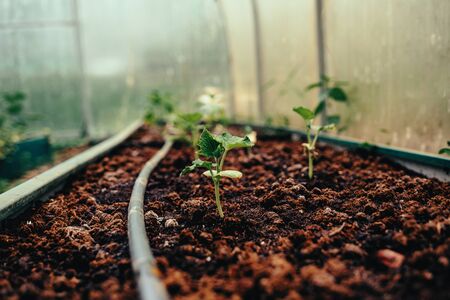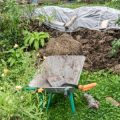1. Identifying Signs of Grow Light Issues
When growing plants indoors, lighting is one of the most critical factors for healthy development. But when your plants arent thriving, it can be tough to know if the grow light is the issue or if something else is going wrong. Here’s how to spot common signs that your grow lights might not be doing their job properly.
Common Symptoms of Grow Light Problems
Plants communicate through their appearance. If your indoor garden isn’t looking its best, here are some visual cues that could point to a problem with your lighting:
| Symptom | Possible Lighting Issue |
|---|---|
| Leggy or stretched-out growth | Light is too weak or too far from plants |
| Pale or yellowing leaves | Lack of sufficient light intensity |
| Slow or stunted growth | Incorrect light spectrum or duration |
| Browning leaf tips or scorched spots | Light is too intense or too close |
| No flowering or fruiting in mature plants | Lack of red spectrum light during bloom stage |
How to Tell If Its Really a Light Problem
Sometimes symptoms like yellow leaves or slow growth can be caused by other issues such as watering habits, nutrient deficiencies, or pests. To figure out if lighting is the culprit, ask yourself these questions:
- Is your grow light on for 12–16 hours a day? Most plants need this much light daily indoors.
- Is the distance between your grow light and plant appropriate? LED lights usually perform best 12–24 inches above the canopy.
- Does your grow light provide full-spectrum output? Plants need both blue and red wavelengths for balanced growth.
- Have you recently changed bulbs or fixtures? Older lights may lose intensity over time.
Troubleshooting Tip:
If youre unsure whether lighting is the issue, try moving one struggling plant to a different location under another grow light setup and compare results over a week.
Quick Check: Is Your Grow Light Doing Its Job?
- If your seedlings are tall and floppy → Likely not enough light.
- If leaves look washed out → Possibly too much exposure or wrong spectrum.
- If new growth is slow despite proper watering and nutrients → Check light timing and intensity.
The more familiar you become with how plants react to their environment, the easier it becomes to pinpoint whether your grow lights need adjusting. Keep observing and adjusting until you find what works best for your space and plant types.
2. Understanding the Right Light Spectrum for Your Plants
When growing plants indoors, it’s not just about giving them light—it’s about giving them the right kind of light. Plants respond to different wavelengths of light during various stages of growth. If your grow lights aren’t providing the correct spectrum, your plants might grow slowly, stretch too much, or fail to flower and produce fruit.
Why Light Spectrum Matters
Light spectrum refers to the range of wavelengths emitted by a light source. Sunlight naturally provides a full spectrum, but many indoor grow lights do not. To mimic sunlight effectively, you need to match the spectrum to what your plants need at each stage of their life cycle.
Main Light Spectrums and Their Effects
| Spectrum Color | Wavelength Range | Growth Stage Supported | Effects on Plants |
|---|---|---|---|
| Blue | 400–500 nm | Seedling & Vegetative | Encourages leafy growth and compact structure |
| Red | 600–700 nm | Flowering & Fruiting | Promotes blooming and fruit production |
| Full Spectrum (White) | 400–700 nm+ | All Stages | Mimics natural sunlight; supports overall plant health |
| Far Red | 700–800 nm | Late Flowering | Aids in flowering response and fruit ripening |
Troubleshooting Spectrum-Related Issues
If your plants seem leggy, discolored, or are failing to flower, the issue could be with your light spectrum. Here are a few common problems:
- Pale or Yellow Leaves: Often caused by lack of blue light during vegetative growth.
- No Flowers or Fruit: May indicate insufficient red or far-red light during the flowering phase.
- Sparse Growth: Could be due to using a single-spectrum bulb throughout all growth stages.
- Brittle Stems or Stunted Growth: Can result from poor-quality full-spectrum lighting that doesn’t actually cover necessary wavelengths.
Selecting the Right Grow Light Type
The type of grow light you choose also affects the spectrum it delivers. Heres a quick comparison:
| Light Type | Spectrum Quality | Best For |
|---|---|---|
| CFL (Compact Fluorescent) | Narrow; often blue-heavy or red-heavy depending on bulb type | Beginners; small herb gardens |
| T5 Fluorescent Tubes | Larger spectrum range than CFLs but still limited compared to LEDs | Seedlings; leafy greens like lettuce and spinach |
| LED Grow Lights (Full Spectrum) | Tunable; covers entire PAR range (Photosynthetically Active Radiation) | Mature plants; flowering fruits and vegetables; year-round gardening |
| HID (High Intensity Discharge) | Spectrum varies based on type (Metal Halide vs. High Pressure Sodium) | Larger setups; high-yield crops like tomatoes and peppers |
A Quick Tip:
If youre unsure which spectrum your plant needs, go with a full-spectrum LED grow light labeled as “sunlight simulation”—its versatile enough for most home gardening needs.
Selecting the proper light spectrum is essential for healthy indoor gardening. By understanding how each wavelength affects plant development, you can optimize your setup and avoid common pitfalls that hold back growth and yield.

3. Dealing with Inadequate Light Coverage and Intensity
One of the most common issues indoor gardeners face is not giving their plants enough light—or not spreading it evenly across the entire growing area. This can lead to weak, leggy growth or uneven plant development. Lets break down how you can fix this by properly positioning your grow lights and adjusting their intensity.
Understanding Light Coverage
Different types of grow lights cover different areas. For example, LED panels usually offer focused coverage, while fluorescent tubes spread light more broadly but with less intensity. Knowing your light’s coverage area is key to ensuring each plant gets what it needs.
Common Grow Light Coverage Areas
| Type of Grow Light | Typical Coverage Area (sq ft) |
|---|---|
| LED Panel (300W) | 2 x 2 |
| T5 Fluorescent (4-bulb, 4ft) | 4 x 2 |
| CFL Bulb (60W) | 1.5 x 1.5 |
| High Pressure Sodium (400W) | 3 x 3 |
Proper Grow Light Positioning
Your lights need to be close enough to provide sufficient intensity, but not so close that they burn the plants. A general rule is:
- LEDs: Keep 12–24 inches above canopy
- T5 Fluorescents: Keep 6–12 inches above canopy
- CFLs: Keep 4–6 inches above canopy
You should also adjust the height as your plants grow to maintain consistent intensity.
Avoiding Shadow Zones
If some plants aren’t getting enough light because others are blocking them, try rearranging your setup or adding supplemental lighting. Rotating your plants weekly can also help ensure even exposure.
Selecting the Right Intensity for Photosynthesis
The goal is to mimic natural sunlight, which provides around 2000 µmol/m²/s at noon on a clear day. For most leafy greens, aim for 100–300 µmol/m²/s; fruiting plants like tomatoes may need closer to 600–800 µmol/m²/s.
Simplified Light Intensity Guidelines
| Plant Type | Irradiance Needed (µmol/m²/s) |
|---|---|
| Lettuce, Herbs | 100–300 |
| Tropical Foliage Plants | 50–150 |
| TOMATOES, Peppers | 600–800 |
Troubleshooting Tips
- If plants are leaning toward one side: rotate them regularly or reposition the lights.
- If leaves look pale or stretched: increase light intensity or lower the fixture slightly.
- If leaf edges are browning: raise the lights to reduce heat stress.
A well-lit garden starts with understanding your specific setup and making small adjustments as needed. Keep checking in on your plants—they’ll tell you if something’s off!
4. Managing Heat Buildup and Electrical Safety
Grow lights are essential for indoor gardening, but they can generate a lot of heat and pose electrical risks if not managed properly. Understanding how to deal with heat buildup and ensure safe electrical practices will help your plants thrive and keep your indoor garden safe.
Recognizing Heat-Related Problems
Excessive heat from grow lights can stress plants, cause leaf burn, slow growth, and even damage equipment over time. Common signs of heat issues include:
- Curling or browning of leaf edges
- Wilting even when soil is moist
- Plants growing tall and leggy to escape the heat
- Discoloration or fading near light sources
Setting Up Proper Ventilation
A good ventilation setup helps remove excess heat and ensures fresh air circulation. Here are some simple ways to improve airflow in your grow space:
| Ventilation Method | Description |
|---|---|
| Inline Fans | Pulls hot air out and brings cooler air in; ideal for larger grow tents or rooms. |
| Circulating Fans | Keeps air moving within the space to prevent hot spots. |
| Open Vents or Windows | A natural way to let heat escape in small setups. |
Tips for Effective Cooling
- Aim to keep grow room temperatures between 65–80°F (18–27°C)
- Avoid placing grow lights too close to plant tops—check manufacturer guidelines for distance
- If using HID lights, consider switching to LEDs which produce less heat
Electrical Safety Tips for Indoor Grow Lights
Your grow lights run on electricity, so its important to set things up safely to avoid fire hazards or damage. Follow these basic safety tips:
- Avoid Overloading Circuits: Know how much wattage your outlet can handle—spread devices across multiple circuits if needed.
- Use Quality Extension Cords: Only use heavy-duty cords rated for indoor gardening use; avoid daisy-chaining multiple cords together.
- Add Surge Protectors: Protect your investment by using surge-protected power strips designed for higher loads.
- Avoid Water Contact: Keep all plugs, timers, and cords away from water sources or damp areas.
Cord Management Checklist
| Action | Status Check |
|---|---|
| Cords are off the ground and away from spills | ✔ Yes / ✘ No |
| No exposed wires or frayed cables | ✔ Yes / ✘ No |
| No cords running under rugs or mats | ✔ Yes / ✘ No |
If you’re ever unsure about electrical load or safety, consult an electrician—especially if youre setting up a large-scale indoor garden. Keeping things cool and safe will help your plants grow better and give you peace of mind as a gardener.
5. Troubleshooting Timers and Light Schedules
One of the most overlooked issues in indoor gardening is improper use of timers and inconsistent light schedules. Plants rely on a steady rhythm of light and dark periods to grow properly. If your grow lights are turning on or off at the wrong times, or if your schedule changes frequently, it can stress your plants and stunt their growth.
Why Consistent Light Cycles Matter
Plants follow a natural day/night rhythm called the photoperiod. This cycle affects how they photosynthesize, flower, and grow. Disruptions in this cycle can lead to poor development, delayed flowering, or even plant shock.
| Light Schedule | Ideal Use | Common Issues When Inconsistent |
|---|---|---|
| 18 hours light / 6 hours dark | Vegetative stage for most plants | Slowed growth, leaf droop |
| 12 hours light / 12 hours dark | Flowering stage (e.g., tomatoes, cannabis) | Delayed blooming, stress response |
| 16 hours light / 8 hours dark | General indoor gardening (herbs, greens) | Poor foliage development |
How to Use Timers Properly
A good timer ensures your plants get consistent lighting without you having to manually switch the lights on and off every day. Here’s how to set them up correctly:
Select the Right Type of Timer
- Mechanical timers: Budget-friendly but less precise. Best for simple setups.
- Digital timers: More accurate with multiple settings. Ideal for complex light cycles.
- Smart timers: Controlled via apps; great for remote adjustments and monitoring.
Check Timer Accuracy Regularly
Even high-quality timers can drift over time. Set a reminder to check your timer once a week to ensure its keeping accurate time.
Avoid Power Outages and Resets
If theres a power outage, mechanical timers often stop working until reset. Consider using a backup battery-powered digital timer or a smart plug that resumes its schedule automatically after an outage.
Troubleshooting Common Timer Problems
| Problem | Possible Cause | Fix |
|---|---|---|
| Lights not turning on/off as scheduled | Timer not set correctly or malfunctioning outlet | Double-check settings; test outlet with another device |
| Lights flicker or turn off randomly | Poor connection or overloaded circuit | Ensure plug is secure; reduce number of devices on one outlet |
| Noisy mechanical timer clicking sounds constantly | Aging mechanism or misalignment inside timer | Replace with new timer or upgrade to digital/smart version |
Best Practices for Reliable Light Schedules
- Stick to the same on/off times daily—even on weekends!
- Avoid changing schedules mid-cycle unless absolutely necessary.
- If growing different types of plants, group them by similar light needs so you don’t have conflicting schedules.
Your timer might be small, but it plays a big role in keeping your indoor garden healthy and thriving. By setting it up right and checking it often, you’ll give your plants the consistency they need to flourish indoors.


